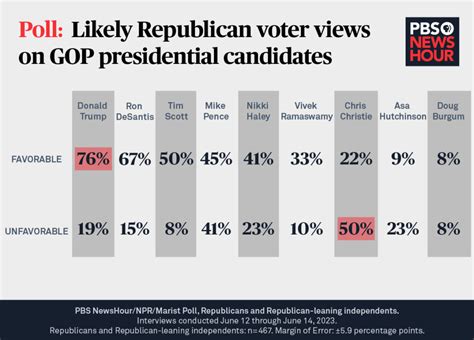Explore emerging technologies, performance data analysis, youth programs, fan engagement strategies, and global trends shaping the future of baseball. Join the evolution!As the world of sports evolves, baseball stands at the forefront of innovation, poised to redefine how the game is played, analyzed, and experienced. The Future Of Baseball: Trends To Watch In The Coming Years delves into the captivating advancements that are shaping the landscape of America’s pastime. From emerging technologies that enhance player performance to revolutionary fan engagement strategies, the next few years promise to bring significant changes. Additionally, insights into youth development programs and global expansion trends highlight the game’s growth beyond traditional boundaries. Join us as we explore the future of baseball, uncovering the key trends that will not only influence players on the field but also transform the fan experience off of it. Get ready to witness how these changes will craft the next chapter in the enduring legacy of baseball.
Emerging Technologies Shaping The Future Of Baseball
As we look ahead, the role of technology in baseball continues to expand, fundamentally altering how the game is played, managed, and enjoyed. The future of baseball is heavily shaped by several emerging technologies that promise to enhance performance, improve fan engagement, and streamline operations.
One significant area of innovation is the use of advanced analytics and artificial intelligence (AI). Teams are leveraging data analytics to evaluate player performance in real-time, leading to improved strategies on the field. Machine learning algorithms analyze vast amounts of data collected from games, enabling teams to make informed decisions about player acquisitions, in-game tactics, and training methods.
Wearable technology is another critical element that is revolutionizing player development. Devices such as smart jerseys and biometric sensors monitor players’ physical metrics during games and practices. This data helps coaching staff tailor training programs to optimize performance while minimizing the risk of injury, which is crucial for long-term athlete development.
Furthermore, augmented reality (AR) and virtual reality (VR) are making their way into the training and fan experience. AR applications can provide additional data layers for players during practice, while VR simulators allow pitchers and batters to practice against virtual opponents. These technologies not only enhance player skills but also create immersive experiences for fans, who can engage with the game in innovative ways.
Streaming technology also continues to evolve, with high-definition broadcasts and interactive viewing options becoming increasingly popular. Fans can watch games from multiple angles and even choose camera perspectives, enhancing their overall experience. The integration of social media platforms further enriches fan interactions, allowing for real-time updates and participation during games.
As we explore the future of baseball, it is evident that emerging technologies will play a crucial role in shaping the way the game is played and experienced. From advanced analytics to immersive fan experiences, these advancements are setting the stage for an exciting era in baseball.
Analyzing Player Performance Data For Future Success
As we look towards The Future of baseball, one of the most pivotal transformations is the analysis of player performance data. The integration of advanced analytics has become a cornerstone for teams striving to gain a competitive edge. By leveraging large datasets, organizations can make informed decisions that reshape their strategies both on and off the field.
With the advent of technologies such as player tracking systems and biometric sensors, teams can collect vast amounts of information about player movements, pitching mechanics, batting techniques, and even fatigue levels. This wealth of data allows coaches and analysts to identify strengths and weaknesses in each player’s game, paving the way for tailored training programs that enhance performance.
Below is a summary table illustrating some key metrics used in player performance analysis:
| Metric | Description | Importance |
|---|---|---|
| BABIP (Batting Average on Balls In Play) | A measure of how often a ball in play results in a hit. | Helps evaluate a player’s true hitting ability. |
| FIP (Fielding Independent Pitching) | A metric that estimates a pitcher’s run prevention independent of the defense behind them. | Provides insight into a pitcher’s effectiveness, neutralizing factors like errors. |
| Exit Velocity | The speed of the ball as it leaves the bat after contact. | Indicates potential success at the plate and likelihood of extra-base hits. |
| Spin Rate | Measures the number of revolutions the ball makes per minute. | Reveals a pitcher’s ability to manipulate pitches for better results. |
Moreover, the significance of player performance data extends beyond the immediate effects on gameplay. The insights garnered from analyzing these metrics can influence long-term decisions regarding draft picks, trades, and team composition. By understanding player trajectories and potential, teams are better equipped to invest in their athletes and forecast future success.
As we delve deeper into the analytics revolution, it’s evident that the focus on data will play a critical role in shaping The Future of baseball. Teams that prioritize data analysis are not merely adapting to the present; they are actively sculpting the game’s future landscape.
Youth Development Programs Impacting The Future Of Baseball
As the sport evolves, one of the most significant factors determining The Future of baseball lies in youth development programs. These initiatives are not just about teaching young players how to hit or pitch; they encompass a broader spectrum of skills and knowledge that can prepare them for the rigors of professional play.
Many organizations are increasingly implementing holistic training techniques that focus on physical conditioning, mental resilience, and strategic understanding of the game. This well-rounded approach is crucial in preparing the next generation of players to excel at higher competitive levels.
Moreover, technology plays a pivotal role in these youth programs. Digital platforms and analytics tools are now utilized to monitor player performance, providing valuable insights that guide training and development. Coaches can analyze metrics to identify players’ strengths and weaknesses, fostering a more tailored and effective training regimen. As a result, players can develop skills that are directly aligned with the demands of modern baseball.
Furthermore, the inclusion of diverse coaching staff and mentorship initiatives helps to promote inclusivity and enhance the growth of young athletes. By learning from varied experiences and approaches, aspiring baseball players can broaden their perspective and applicability of the game. Such mentorship can also inspire players to stay committed to their goals, fostering longevity in their baseball journey.
Overall, youth development programs are a critical component in shaping The Future of baseball. By investing in young talent today, the sport can ensure a robust pipeline of skilled individuals ready to take on the challenges of professional baseball in the years to come.
The Future Of Baseball: Changing Fan Engagement Strategies
As we look forward to The Future of baseball, one of the most significant trends is the evolution of fan engagement strategies. With advancements in technology and shifting consumer preferences, teams and organizations are adopting innovative approaches to connect with their fans more effectively.
Here are some key strategies that are shaping fan engagement in baseball:
| Strategy | Description |
|---|---|
| Interactive Apps | Teams are developing mobile apps that enhance the live game experience by providing real-time statistics, player information, and interactive features such as polls and trivia. |
| Social Media Engagement | Clubs are leveraging platforms like Twitter, Instagram, and TikTok to engage with fans, share behind-the-scenes content, and create buzz around games through creative marketing campaigns. |
| Virtual and Augmented Reality | Implementing VR and AR technologies allows fans to experience games in immersive ways, such as virtual stadium tours or augmented stats and highlights during broadcasts. |
| Community-centric Initiatives | Teams are focusing on grassroots marketing by organizing community events and outreach programs to foster a deeper connection with local fans. |
| Personalized Content Delivery | Utilizing data analytics, teams can personalize communication and content delivery, ensuring fans receive relevant updates and promotions tailored to their interests. |
Moreover, enhanced in-stadium experiences are also a crucial aspect of fan engagement. This includes upgraded facilities, improved accessibility, and interactive entertainment options at games that not only make attending more enjoyable but also foster a sense of belonging and community among fans.
As we move forward, it is clear that the way fans interact with baseball is set to transform significantly. By embracing these innovative fan engagement strategies, teams can ensure they remain relevant and appealing to both new and existing fans in the ever-evolving landscape of sports entertainment.
Global Expansion Trends The Future Of Baseball
As we look toward The Future of baseball, one of the most significant trends to watch is the global expansion of the sport. Baseball has historically been predominantly popular in North America, but recent years have seen a surge in interest worldwide. Organizations are beginning to recognize the potential of baseball as a globally embraced sport, and this is reflected in various initiatives and developments.
One notable trend is the increasing participation rates in countries outside the United States, such as Japan, South Korea, and many Latin American nations. Major League Baseball (MLB) has forged partnerships and established academies in these regions to nurture talent from an early age. This outreach not only helps scout and develop players but also fosters a deeper appreciation for the game itself.
Furthermore, the rise of international games, such as the MLB’s series held in London, Mexico City, and Australia, has opened new frontiers for fan engagement and viewership. These events not only serve to promote the sport but also introduce it to new demographics, creating a broader and more diverse fan base. The excitement surrounding these matches indicates a strong potential for future events in different global markets.
Digital media plays a crucial role in this expansion as well, enabling teams and leagues to connect with fans across the globe. Social media platforms and streaming services are used to broadcast games, share highlights, and interact with international audiences. This digital reach significantly boosts the sport’s visibility and creates an inclusive online community where fans can engage with baseball, regardless of their location.
Additionally, MLB’s efforts to grow the sport in Europe and Asia signal a calculated approach towards enhancing its global footprint. More franchises are investing in international talent, showcasing the diverse skill sets players from various backgrounds bring to the game. With scouting and recruitment becoming increasingly globalized, we can expect to see a more multicultural environment within the league.
As baseball continues to evolve, the global expansion trend stands out as a pivotal aspect of The Future of the game. By embracing and nurturing this growth, teams, players, and organizations are setting the stage for a new era of baseball that transcends geographical limitations and encourages a worldwide passion for the sport.
Frequently Asked Questions
What are the key trends shaping the future of baseball?
Key trends include advanced analytics, player health and performance monitoring, increased use of technology in training and gameplay, and shifts in fan engagement strategies.
How has technology impacted player performance in baseball?
Technology has enabled more precise data collection on player performance, allowing teams to tailor training and recovery programs, leading to enhanced player efficiency and injury prevention.
What role does analytics play in modern baseball strategy?
Analytics plays a crucial role in decision-making regarding player acquisitions, game strategies, and in-game tactics, such as defensive shifts and pitching matchups.
How are teams adapting to changing fan demographics?
Teams are adapting by incorporating digital engagement tools, enhancing in-stadium experiences, and offering diverse content that caters to both traditional fans and younger, digitally-savvy audiences.
What innovations are being incorporated into baseball training programs?
Innovations include the use of VR technology for skill development, wearable devices for real-time performance tracking, and personalized training regimens based on data analytics.
What is the expected impact of rule changes on the future of baseball?
Rule changes, such as the pitch clock and limits on mound visits, are expected to accelerate the pace of play, appeal to younger audiences, and promote a more dynamic style of play.
How does the future of baseball address sustainability and environmental concerns?
The future of baseball includes initiatives to reduce carbon footprints, such as eco-friendly stadium designs, waste reduction programs, and sustainable sourcing of materials used in the sport.









